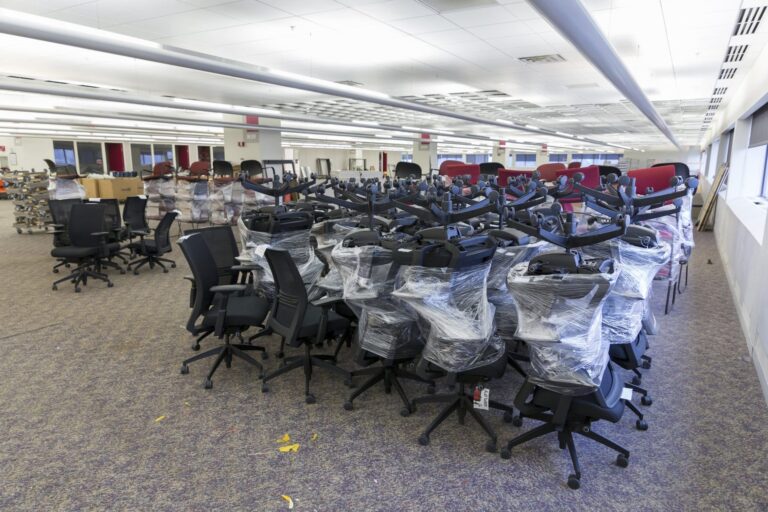By Garry Cooper and Trevor Langdon


As thousands of corporate real estate professionals descend on Denver this weekend for the CoreNet Global Summit,they’ll be ready to discuss office vacancy rates and return-to-work policies. What they need to be talking about is the circular economy.
What does that mean? Well, when most people think about the circular economy – if they think about it all – they think about recycling. And that’s both worth doing and worth improving, but it’s just a small part of circularity and the last resort before the dump. If it even works: A soda can is in theory infinitely recyclable, but in practice in the United States, nearly half of all used beverage cans go to landfill.
And if they know about circularity, it’s probably in the context of cutting down on single-use plastics and reducing food waste. And yes, the coffee cup that passes through your hands on the way to the dump every single morning is a problem we need to solve.
But to focus entirely on these issues is to miss the elephant in the room. Or more accurately, it’s missing the room. By this, we mean the built environment, the spaces and places that the corporate real estate industry manages on a global scale.
As Prashant Rao recently asked in Semafor: “A sector responsible for around a quarter of energy-related carbon emissions could drastically reduce its footprint with solutions that are well-known, inexpensive, and easily deployable. So why doesn’t it?”
Those solutions include basic measures like retrofits and heat pumps – and beyond that, working toward a circular workplace model that engages employees, saves money, cuts emissions, and turns the engines of the economy into workshops for the circular economy.
We know this is possible because it’s what our companies do every single day. Rheaply enables organizations of all stripes to access a re-commerce platform for furniture, fixtures, equipment, and building products, providing rich sustainability reporting and a network of connected marketplaces. Green Standards is a global sustainable decommissioning company, working with more than 25% of the Fortune 500 to keep their office items in use and out of landfills during times of workplace change. Together, we see how the enormous promise of the circular economy can be fulfilled in offices around the world.
The theory is simple: Design out waste, reuse everything, and regenerate the natural and built environments. In practice, as we’ve learned from more than two decades of combined experience, the hardest part is getting buy-in.
Our whole economy is based on the linear “take-make-waste” model, and offices are no exception. Why not order more printer paper than you’ll ever need? Just toss that chair with the wobbly leg. Cubicles are so last century, so junk them. These aren’t thoughts but afterthoughts, and that’s what we need to change.
With the right mindset and a bit of planning, your old office chairs can find new life at a local non-profit. The equipment one division doesn’t need can be put to immediate use by the team down the hall. Strategic resale to growing secondary markets can subsidize the whole operation. And nothing needs to end up slowly decomposing in a landfill.
That’s the circular workplace we’re building today and the one we’ll be talking up in Denver this weekend. It’s not only possible; it’s happening. And the more the real estate industry knows about it, the more we’ll be able to turn that talk into action.
Garry Cooper is the CEO of Rheaply and Trevor Langdon is the CEO of Green Standards.









